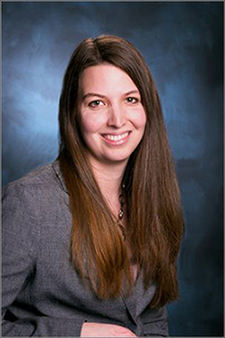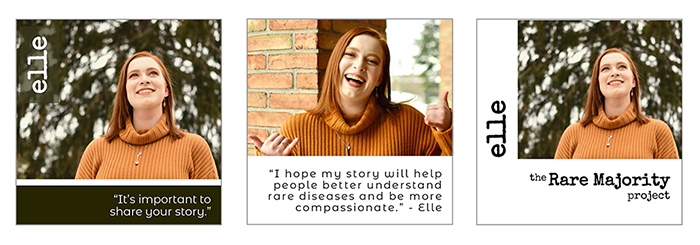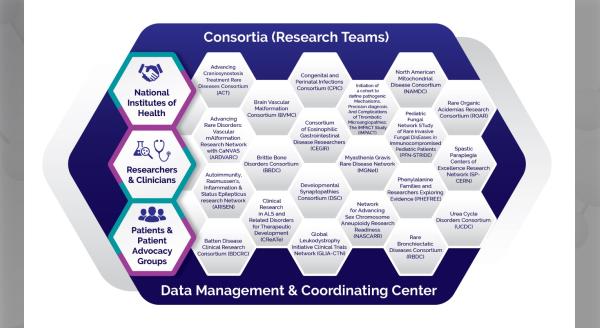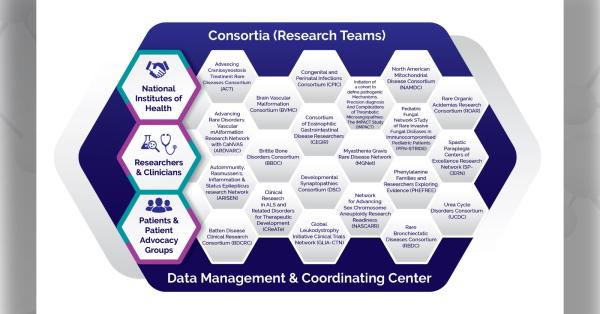 The NCATS Rare Diseases Are Not Rare! Challenge aims to raise awareness of rare diseases in novel and creative ways. Led by the NCATS’ Office of Rare Diseases Research (ORDR), the Challenge encourages collaboration between rare disease patients, families, advocacy groups, doctors, researchers, and community members.
The NCATS Rare Diseases Are Not Rare! Challenge aims to raise awareness of rare diseases in novel and creative ways. Led by the NCATS’ Office of Rare Diseases Research (ORDR), the Challenge encourages collaboration between rare disease patients, families, advocacy groups, doctors, researchers, and community members.
Here, we learn more about 2020 Challenge awardee Rachael Baker, PhD, an assistant professor in chemistry and biochemistry at Calvin University. Baker’s entry, “The Rare Majority Project,” is a social media campaign to help raise awareness of rare diseases and the experiences of people affected by them.
How has rare disease research impacted your life?
"I love working with a community of researchers that are motivated by the needs of real people to move the field forward."
I focus on researching mitochondrial rare diseases with my collaborator Amy Wilstermann, PhD, at Calvin University. About four years ago, I switched to rare disease research from cancer research. When I first made the switch, it was because I felt that I could have a bigger impact in the rare disease field—there was such a high need and there are not enough researchers paying attention to these diseases. What took me by surprise was how much rare disease research ended up impacting me.
Within the first year of my research, I was contacted by a medical geneticist who had a patient with a novel mutation in the protein that we studied. We met and talked to the family and the child. Our work in the lab mattered to their family and impacted their personal rare disease journey. The research we were doing with students mattered to people that we knew who lived in our state. This has a huge impact on how you think about the work you are doing.
I have come to learn that our experience is not an anomaly. The rare disease patient community is closely tied to the research community. I love this! It keeps me focused and energized about my work, and I love working with a community of researchers that are motivated by the needs of real people to move the field forward.

Why and how would you encourage people to get involved with rare disease research?
"The reality is that one in 10 people have a rare disease, so they will likely encounter various rare diseases over the course of their career."
If possible, I think every pre-health student should have some exposure to the rare disease community and rare disease research. Medical students are too often trained to think of rare diseases as “zebras”—something they won’t encounter frequently. The reality, though, is that one in 10 people have a rare disease, so they will likely encounter various rare diseases over the course of their career.
I would also encourage people to be creative about how they think about being involved in research. While doing research at the lab bench is fun and rewarding, it is not always the right fit for someone or accessible to everyone. But researchers need other supports as well. People can contribute to research by helping with fundraising efforts for various foundations that support rare disease research.
It is also really important to make sure that existing research is accessible to the patients and families that can benefit from this research. We have a project on our website where students write summaries of primary literature research articles on various rare diseases to make them accessible to interested patients and families.
Overall, educating people about rare diseases and the need for more research and funding is a big part of what we were trying to do with our #RareMajority project.
What makes you hopeful for the future?
“We have been able to work together to launch something that is bigger and better than what each of us could have done on our own.”
I see so many efforts and projects launching online to raise awareness about rare diseases and how common they actually are. The projects that are collaborative between multiple groups or organizations are the ones that excite me the most.
We have also been surprised and encouraged by the support we found for our rare disease efforts in our own community. When we reached out to a local hospital and research institute about our rare disease symposium, we learned that they had their own dreams about being able to better serve the rare disease community. Since then, we have been able to work together to launch something that is bigger and better than what each of us could have done on our own.
I am hopeful that as we see more of these collaborative efforts take root, rare disease research, education, and support will continue to make their way more consistently into mainstream conversations.
Read more about the 2020 NCATS Rare Diseases Are Not Rare! Challenge.







